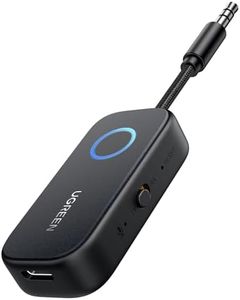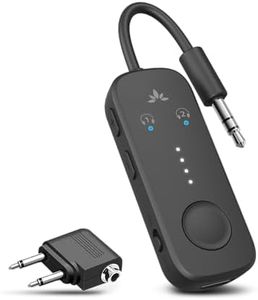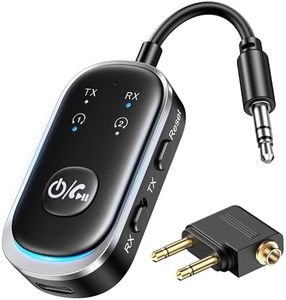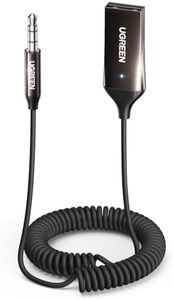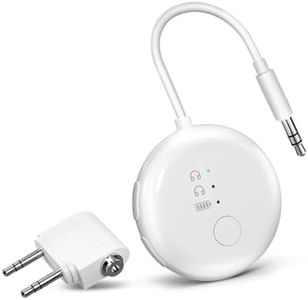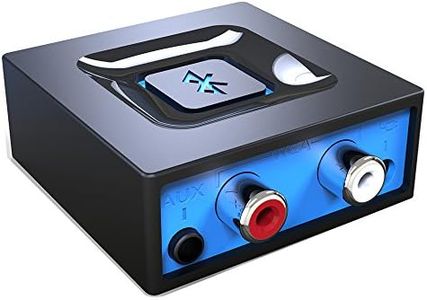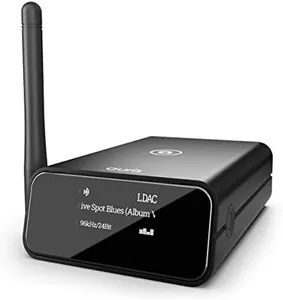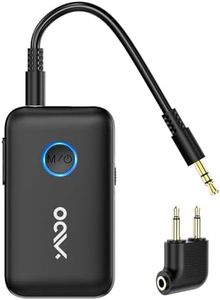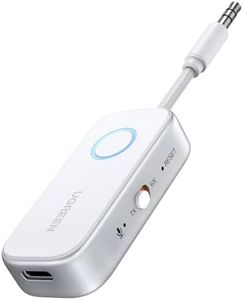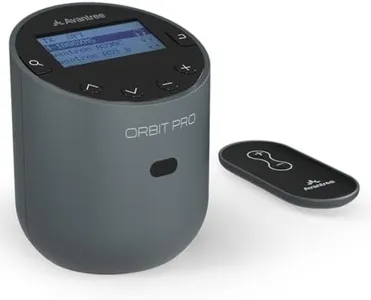We Use CookiesWe use cookies to enhance the security, performance,
functionality and for analytical and promotional activities. By continuing to browse this site you
are agreeing to our privacy policy
10 Best Bluetooth Receiver
From leading brands and best sellers available on the web.By clicking on a link to a third party's website, log data is shared with that third party.
Buying Guide for the Best Bluetooth Receiver
When buying a Bluetooth receiver, it's all about making your regular audio equipment wireless so you can play music or other audio from your phone or computer. Choosing the right receiver means understanding how you want to use it—are you upgrading an old car stereo, making your home stereo wireless, or giving new life to old speakers? Pay attention to compatibility, sound quality, range, and ease of use to make sure the device meets your needs.Bluetooth VersionThe Bluetooth version tells you how recent the technology inside the receiver is. Newer versions, like 5.0 and above, provide better range, faster connection, and use less energy compared to older versions like 4.0 or 3.0. If you mostly use your device in the same room, an older version can work, but for better reliability and future-proofing, go for a higher number, especially if you want to use your receiver further from your audio source.
Supported Audio CodecsAudio codecs, such as SBC, AAC, aptX, or LDAC, determine the sound quality over the Bluetooth connection. Basic codecs like SBC will get the job done for casual listening, but if good sound quality is important, look for receivers that support advanced codecs like aptX or AAC, which reduce delay and loss of detail. Choose based on what your phone or music device also supports for the best experience.
Output Options (Ports)The output ports are how you connect the Bluetooth receiver to your speakers or stereo. Common options include 3.5mm AUX, RCA, and sometimes optical (TOSLINK). 3.5mm is most universal and will suit most headphones and speakers, while RCA is used for older home stereos, and optical is for more high-end, digital connections. Think about what kind of equipment you plan to connect and make sure the receiver has the right port.
Connectivity RangeThe connectivity range refers to how far your phone or device can be from the receiver before the connection drops. Typical ranges go from about 10 meters (33 feet) for basic versions to 30 meters (100 feet) for newer models. If you need to move around your home or want to keep your phone in your pocket while walking around, a longer range is better. For strictly desk or car use, a shorter range is often enough.
Power SourceBluetooth receivers need power, either from a built-in battery, USB, or a wall adapter. Battery-powered receivers offer portability, making them good for cars or outside use, while those that use USB or wall socket are better for permanent, stationary setups like your living room. Think about where and how often you’ll use the receiver to decide which power option is more convenient for you.
Multipoint PairingMultipoint pairing means the receiver can connect to more than one device at the same time, such as two phones or a phone and a laptop. This is handy if you want to quickly switch music sources without disconnecting and reconnecting devices. If you share the receiver with others or switch between devices often, look for this feature.
Ease of Use and ControlsSome receivers have extra features like buttons for play/pause, skipping tracks, or even hands-free calling. If convenience is a priority—like changing songs without picking up your phone—look for a receiver with built-in controls and a clear indicator light. For those who just want simple plug-and-play, these extras may not be necessary.
